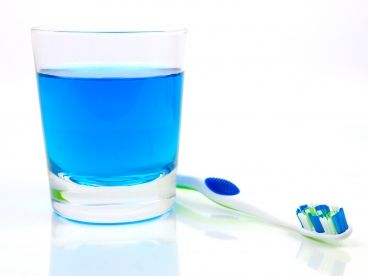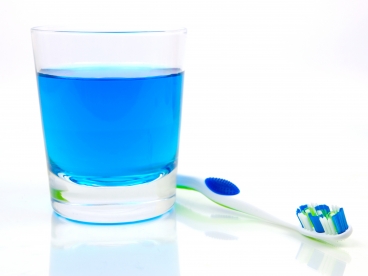
Is Your Mouthwash Staining Your Teeth?
Types of Mouth Rinses That Can Stain Teeth
Cationic Antiseptics
- Produce yellow-brown staining
- Examples – Chlorhexidine, Cetylpyridinium Chloride (a common ingredient in mouthwashes)
Polyvalent Metal Salts
- Produce golden yellow staining
- Examples – Stannous Fluoride
Phenolic Mouthwashes
- Produce yellow staining
- Examples – Listerine (particularly the thymol and eucalyptol ingredients)
 If you do use one of these mouthwashes and are concerned about increased staining, limit your rinsing to night only, right before bed. The staining ingredients react with dietary chromogens (staining compounds in foods and drinks) to increase the precipitation of stains onto the surface of your teeth. By rinsing at night, there is a much lower risk of your mouthwash interacting with what you eat or drink to produce additional staining.
If you do use one of these mouthwashes and are concerned about increased staining, limit your rinsing to night only, right before bed. The staining ingredients react with dietary chromogens (staining compounds in foods and drinks) to increase the precipitation of stains onto the surface of your teeth. By rinsing at night, there is a much lower risk of your mouthwash interacting with what you eat or drink to produce additional staining.
Using a mouth rinse, especially one that contains fluoride, is very important in the maintenance of oral health, as we have discussed previously on the blog. For those of you more predisposed to tooth staining, fear not. We will be covering mouthwashes that do not produce additional staining in the coming weeks so stay tuned.
Schedule an appointment with us to know more about oral health and Teeth Whitening.